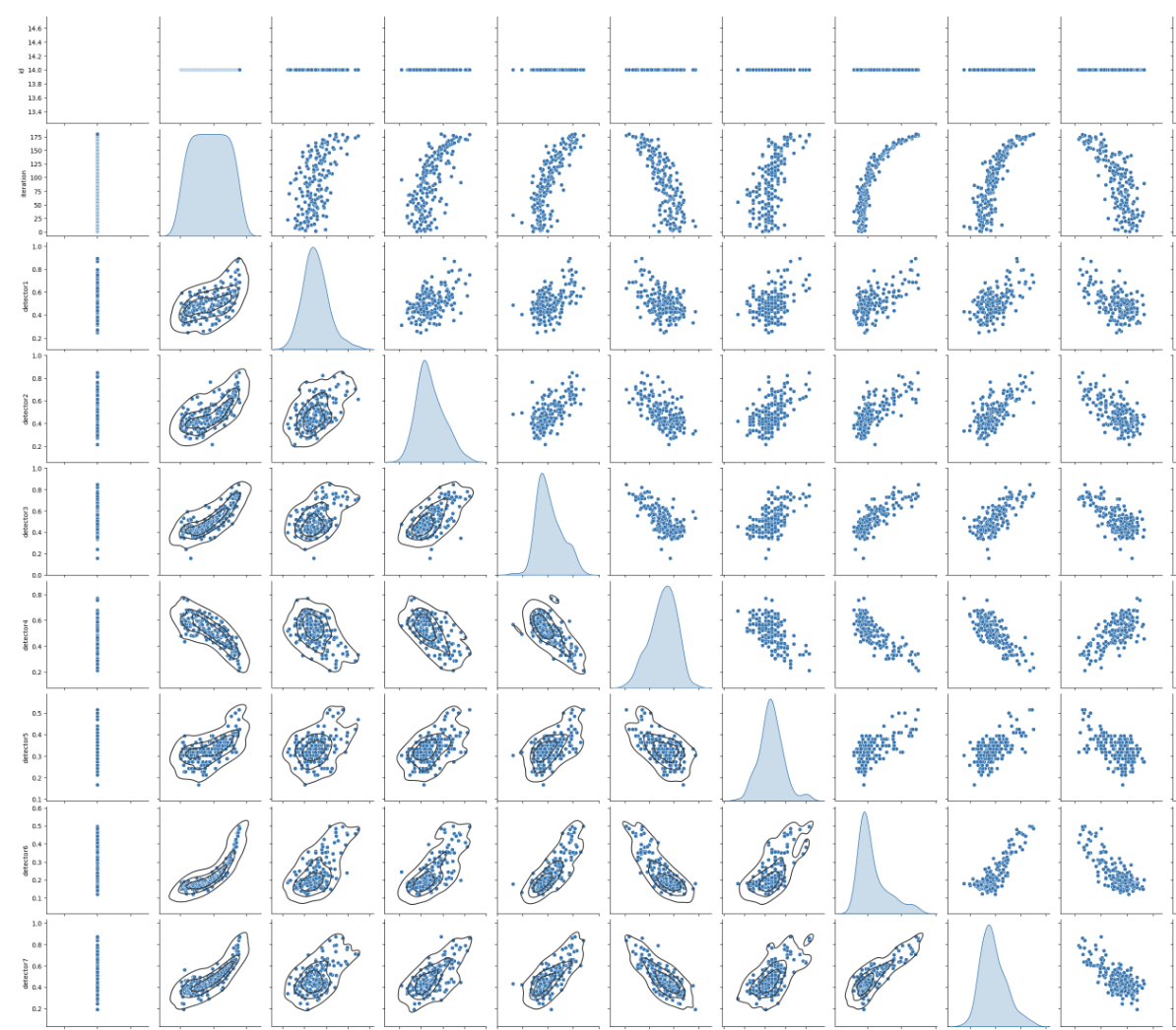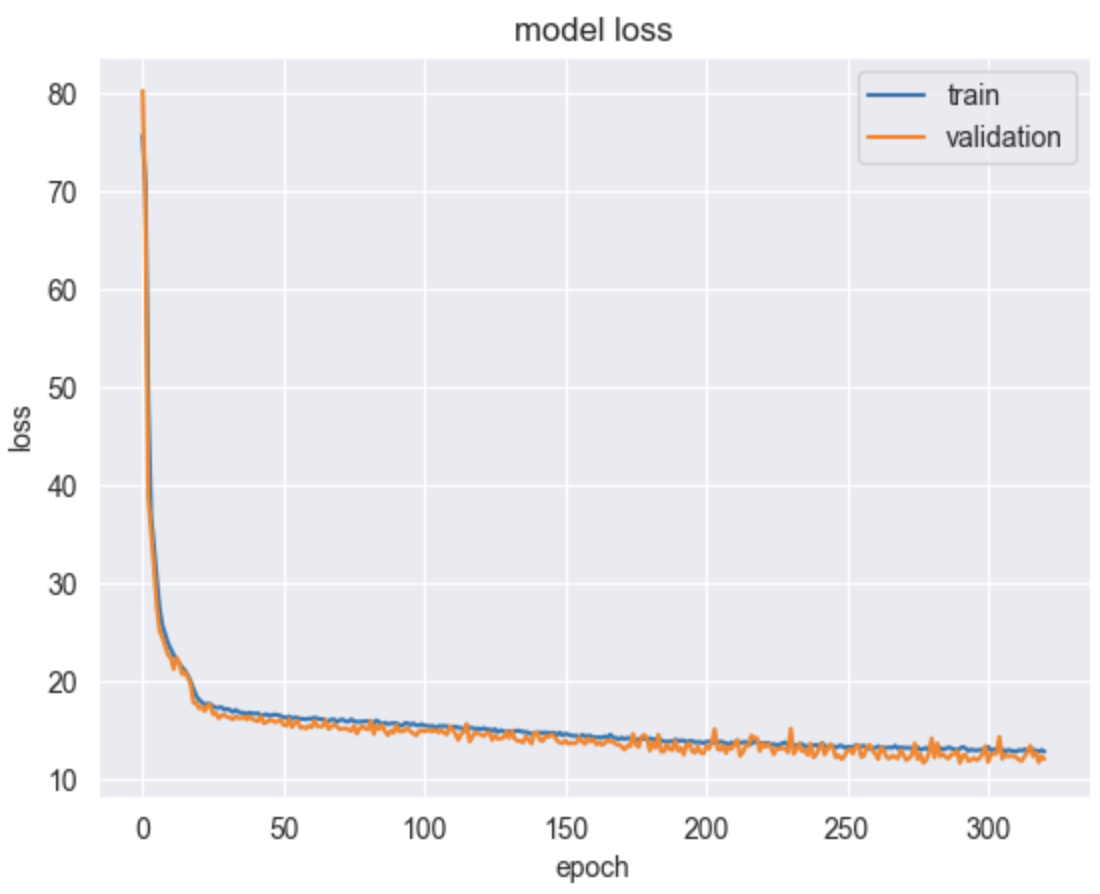The goal of the project is to predict the Remaining Useful Lifetime (RUL) of a device, based on the data collected from its sensors during a time series.
The prediction is done using the Conv1D-based model.
Train data includes Remaining Useful Lifetime data from ~100 different devices, each with a unique id. A time series, with a number representing RUL for each moment of the time, is given under a single device ID. The subset of data (only id 14) is used as a training dataset. Our goal is to predict accurate RUL numbers for the time series of the test dataset. Before training or evaluation, data is normalized using min-max scaling.
The following plot represents the behavior of detector1 on the first 20 IDs.
The following plot represents the correlation between the first 7 detectors:
It is needed to predict the RUL number based on the previous 40-time points. For that, the train dataset should be divided into blocks of length 40 (i ... i+40, i+1 ... i+1+40, ....), and take as labels the i+40th RUL number. This means, that each time interval of length 40 has to correspond to the first RUL number starting from the end of this interval. We feed a (len(k-th id)-40) x 40 x num_features matrix into the model as an input and 1 x (len(k-th id)-40) array of true labels, and fit the model for each id. During inference, for each t time-point, an array of [t-40: t] moments is taken by the model as an input, and the output is the RUL for (t+1) - th time moment.
The plot of the losses (val and training) during 300+ epochs.
Evaluation is done using RMSD (Root Mean Square Deviation). That is the rounded mean of the MSE vector between test labels and predictions.
This plot shows the predictions for each time interval on the test data (14th id) (0 ... 40, 1 ... 41, ....), for the moments (41, 42, .....)




